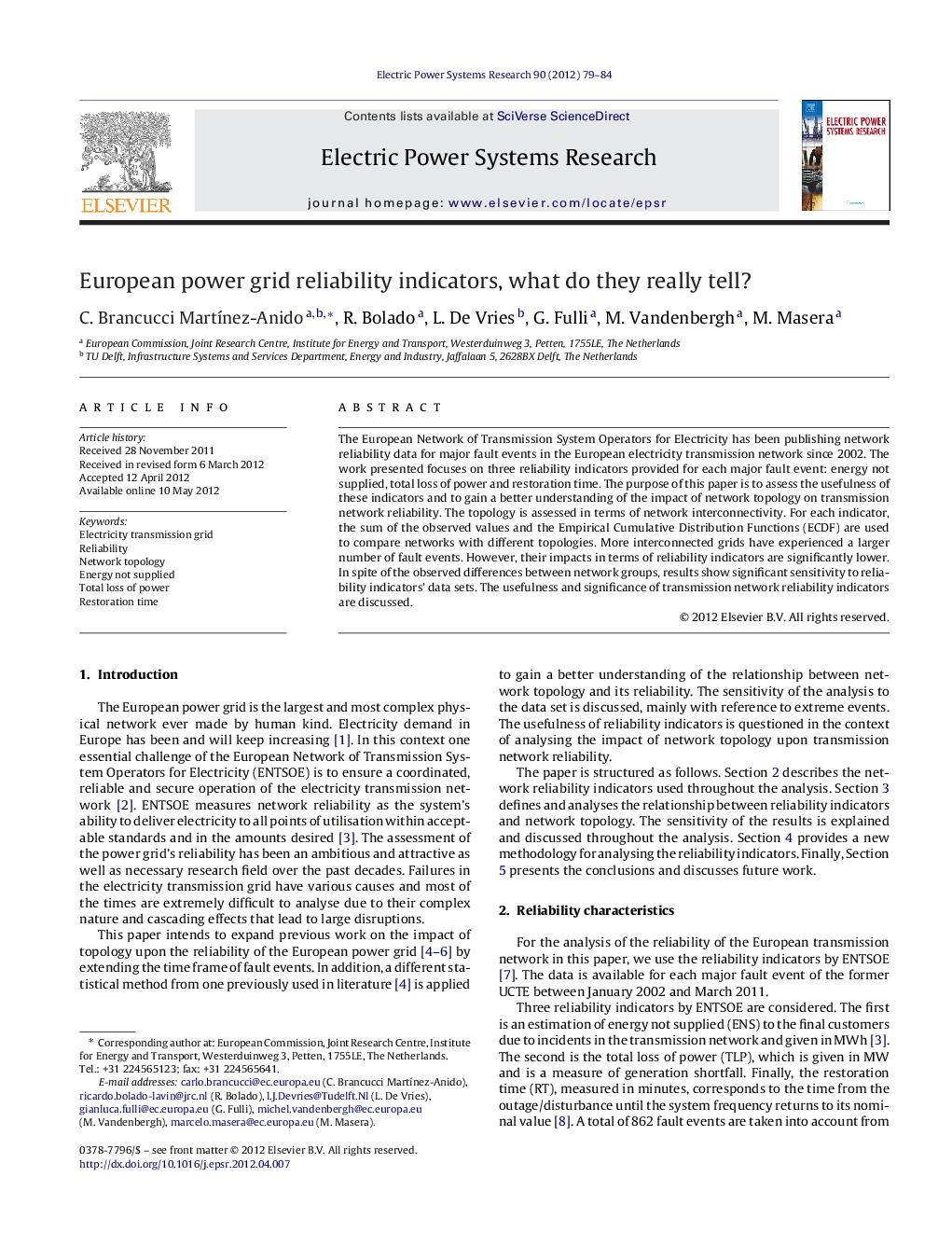| Article ID | Journal | Published Year | Pages | File Type |
|---|---|---|---|---|
| 705518 | Electric Power Systems Research | 2012 | 6 Pages |
The European Network of Transmission System Operators for Electricity has been publishing network reliability data for major fault events in the European electricity transmission network since 2002. The work presented focuses on three reliability indicators provided for each major fault event: energy not supplied, total loss of power and restoration time. The purpose of this paper is to assess the usefulness of these indicators and to gain a better understanding of the impact of network topology on transmission network reliability. The topology is assessed in terms of network interconnectivity. For each indicator, the sum of the observed values and the Empirical Cumulative Distribution Functions (ECDF) are used to compare networks with different topologies. More interconnected grids have experienced a larger number of fault events. However, their impacts in terms of reliability indicators are significantly lower. In spite of the observed differences between network groups, results show significant sensitivity to reliability indicators’ data sets. The usefulness and significance of transmission network reliability indicators are discussed.
► The impact of network topology on transmission network reliability is analysed. ► The usefulness of transmission network reliability indicators is discussed. ► More interconnected power grids have experienced a larger number of fault events. ► Impacts in terms of reliability indicators are lower for more interconnected grids. ► The analysis is shown to be very sensitive to rare extreme events.
